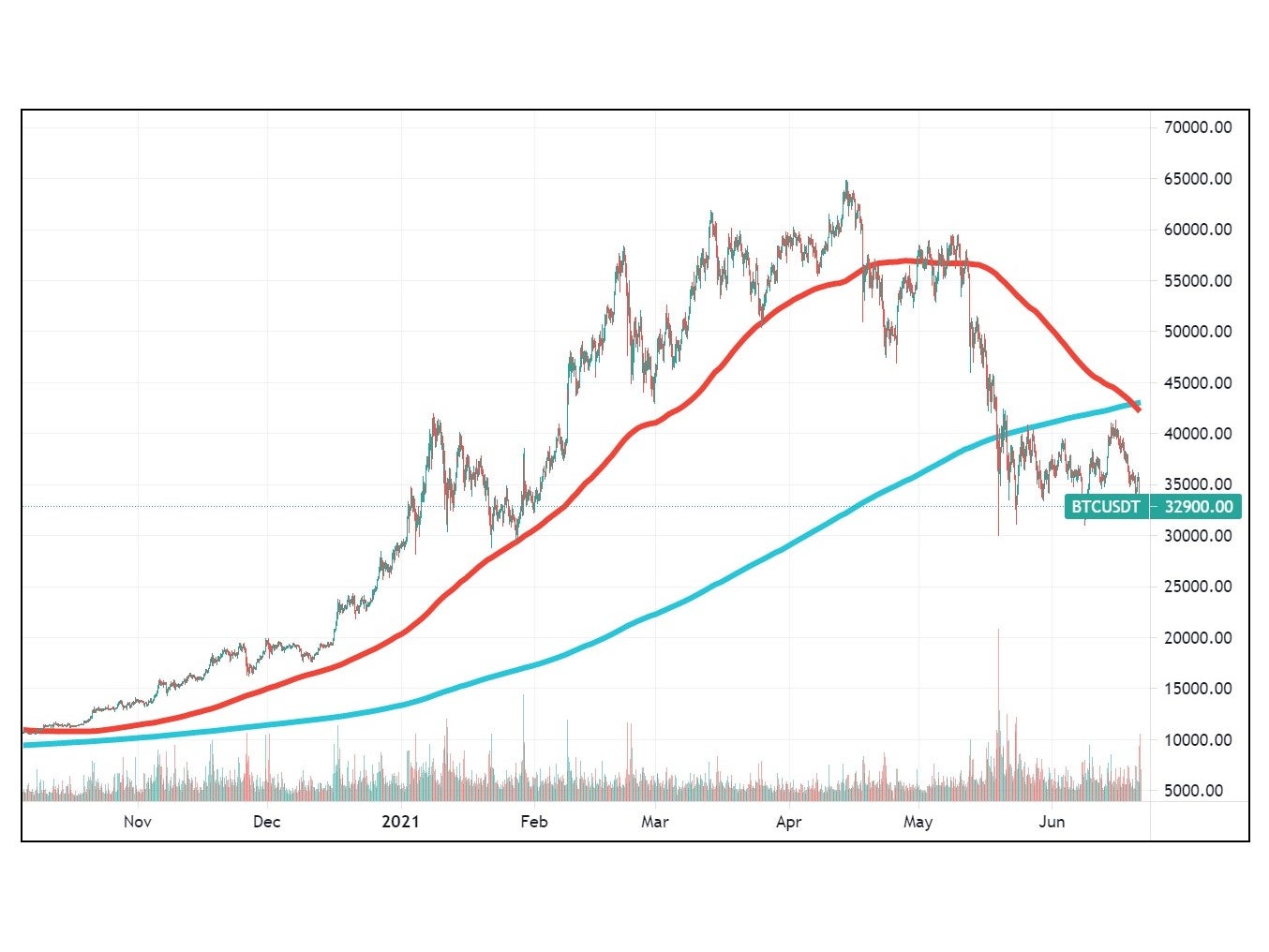Bitcoin price crashes through ‘death cross’, fuelling fears of crypto bear market
Market pattern was seen during Wall Street Crash of 1929 and 2008 Financial Crisis – but cryptocurrency is notoriously immune to prediction models

A succession of price crashes in recent weeks means bitcoin has once again passed through a market pattern known as a “death cross”.
This ominous-sounding term refers to when the cryptocurrency’s 50-day moving average crosses its 200-day moving average (see chart below), and is used by some analysts as a sign that a long-term bull market is finally over. Notable death cross events in other markets include the Wall Street Crash of 1929 and the 2008 Financial Crisis.
>> Follow all the latest updates with The Independent’s live coverage of the crypto market
Bitcoin’s price is currently trading at around half its all-time high of $64,000, which it hit in April this year. Despite the staggering losses, crypto analysts have been divided over whether this fall is part of a long-term downwards trend, or merely a blip on the way to new record highs.
The latest crash has seen bitcoin lose more than 20 per cent of its value over the last week, with further losses on Monday taking it past the dreaded death cross mark. It has inevitably had knock-on effects for the rest of the cryptocurrency market, with Ethereum (ether), Cardano (ada) and dogecoin all tending to mirror bitcoin’s price movements.
Some even fear that the broader market could enter a “crypto winter” phase, similar to the one seen following the 2017/18 bull run.
But it may not as straight-forward as simply declaring a bear market is now underway, especially with an asset as temperamental and volatile as bitcoin.

It is the first death cross of 2021, however history suggests that a continued market downturn is far from inevitable. Previous death crosses in 2019 and 2020 both resulted in considerable price gains over the coming months, with the one in March last year coming right before a market rally that saw bitcoin shoot up from below $5,00 by more than 1,000 per cent over the next year.
Such rebounds would suggest that the death cross is a lagging indicator prone to acting as a bearish marker, when in fact the pattern could just as equally signal that most of the damage is already done.
“Ironically, death crosses are often a sign that the worst is already behind us,” noted one market watcher on Twitter.
“At the 2019 death cross, bitcoin had already went through a -47 per cent dip before the death cross flashed, with a 52 per cent recovery after. And a -64 per cent dip before the 2020 death cross, with a quick 150 per cent recovery.”
Another price model that would suggest more gains could follow this death cross is the Stock-to-Flow model (S2F), which charts bitcoin’s price against its in-built scarcity.
PlanB, the pseudonymous Dutch analyst who created this model, has stuck by his prediction that bitcoin will reach above $100,000 before the end of 2021.
“Just to confirm: both my S2F(X) model and on-chain signal point towards a second run of this bull market,” he tweeted amid last week’s crash.
He followed this up with a further endorsement of his forecast over the weekend, tweeting that his “worst case scenario” for 2021 was $47,000 by August, $43,000 by September, $63,000 by October, $98,000 by November and $135,000 by November.
The number of factors impacting bitcoin’s price – including regulatory, institutional or sovereign endorsements, and general sentiment – means that any price model is prone to being derailed. It is therefore wildly difficult to predict which way bitcoin will go from here, and previous occurrences hint that there is a fifty-fifty chance it could go either way.


Join our commenting forum
Join thought-provoking conversations, follow other Independent readers and see their replies
Comments